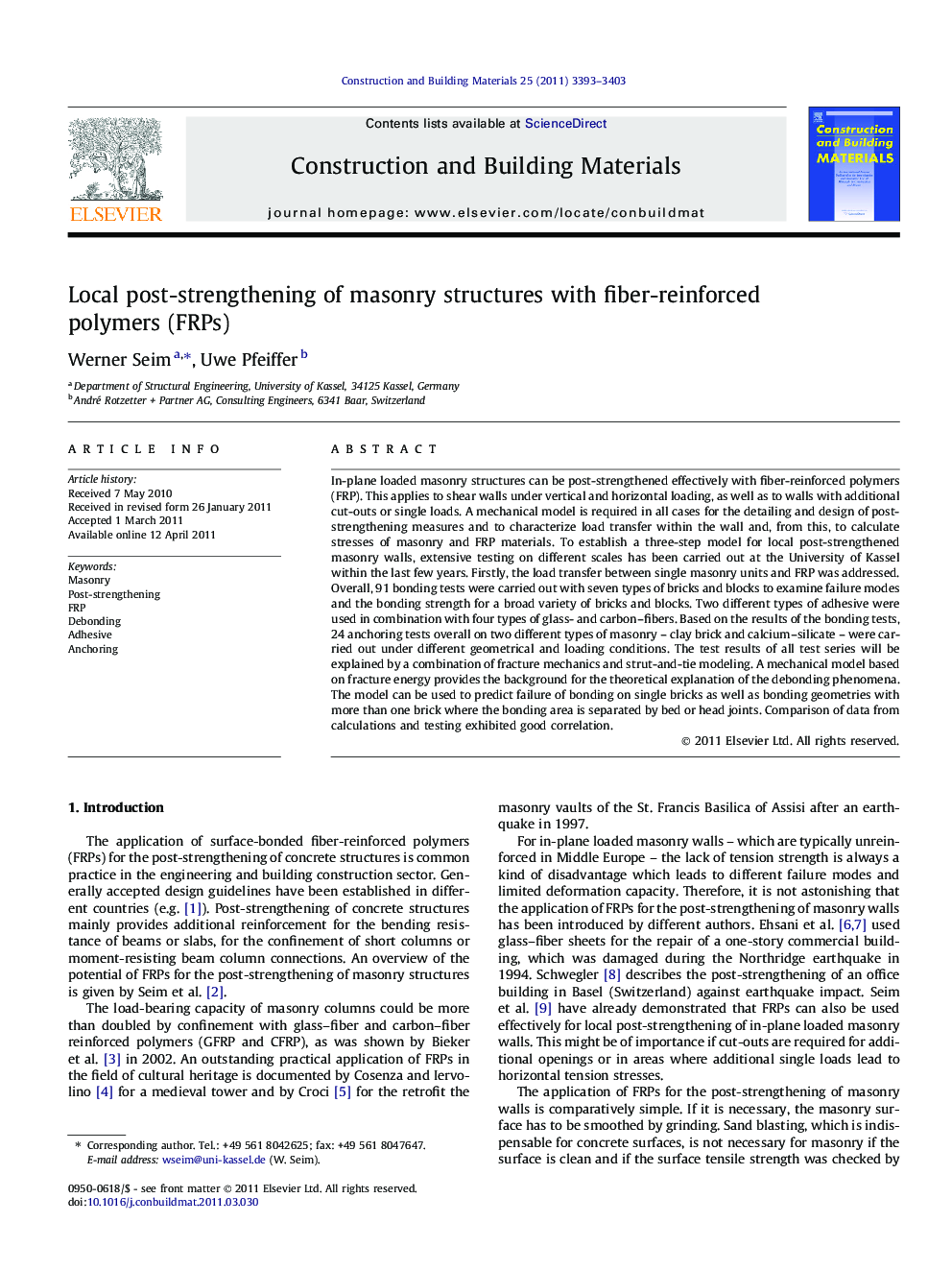| Article ID | Journal | Published Year | Pages | File Type |
|---|---|---|---|---|
| 259820 | Construction and Building Materials | 2011 | 11 Pages |
In-plane loaded masonry structures can be post-strengthened effectively with fiber-reinforced polymers (FRP). This applies to shear walls under vertical and horizontal loading, as well as to walls with additional cut-outs or single loads. A mechanical model is required in all cases for the detailing and design of post-strengthening measures and to characterize load transfer within the wall and, from this, to calculate stresses of masonry and FRP materials. To establish a three-step model for local post-strengthened masonry walls, extensive testing on different scales has been carried out at the University of Kassel within the last few years. Firstly, the load transfer between single masonry units and FRP was addressed. Overall, 91 bonding tests were carried out with seven types of bricks and blocks to examine failure modes and the bonding strength for a broad variety of bricks and blocks. Two different types of adhesive were used in combination with four types of glass- and carbon–fibers. Based on the results of the bonding tests, 24 anchoring tests overall on two different types of masonry – clay brick and calcium–silicate – were carried out under different geometrical and loading conditions. The test results of all test series will be explained by a combination of fracture mechanics and strut-and-tie modeling. A mechanical model based on fracture energy provides the background for the theoretical explanation of the debonding phenomena. The model can be used to predict failure of bonding on single bricks as well as bonding geometries with more than one brick where the bonding area is separated by bed or head joints. Comparison of data from calculations and testing exhibited good correlation.
► A mechanical model is established for the detailing and design of post-strengthening measures for in-plane-loaded masonry walls with FRP materials. ► The model consists of three steps and covers load transfer within the structure, anchoring and bond. ► Ninety-one bonding tests were carried out with seven types of bricks and blocks to examine failure modes and the bonding strength. ► 24 anchoring tests overall on two different types of masonry – clay brick and calcium-silicate – were carried out under different geometrical and loading conditions. ► The test results of all test series can be explained by a combination of fracture mechanics and strut-and-tie modeling.
